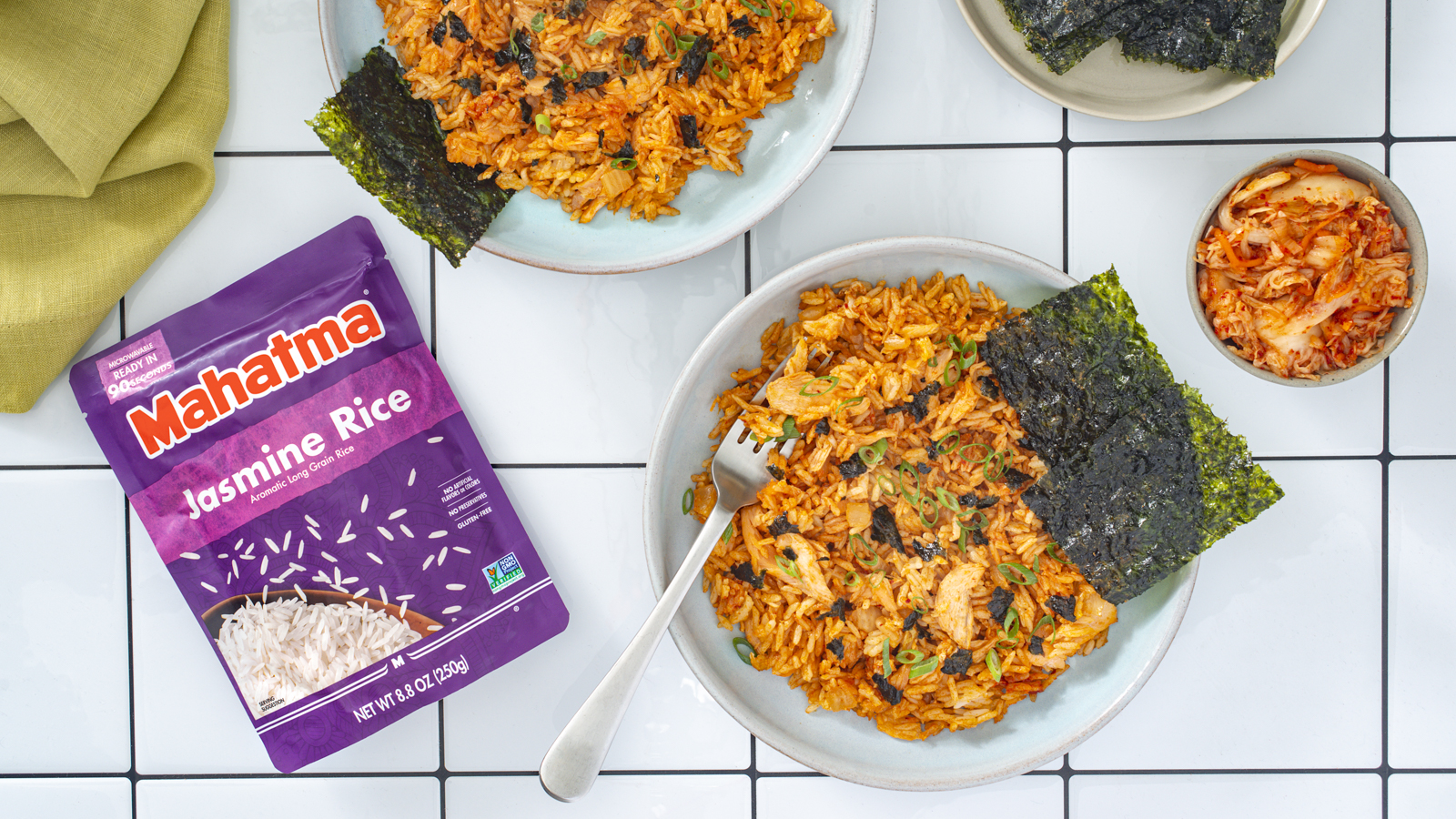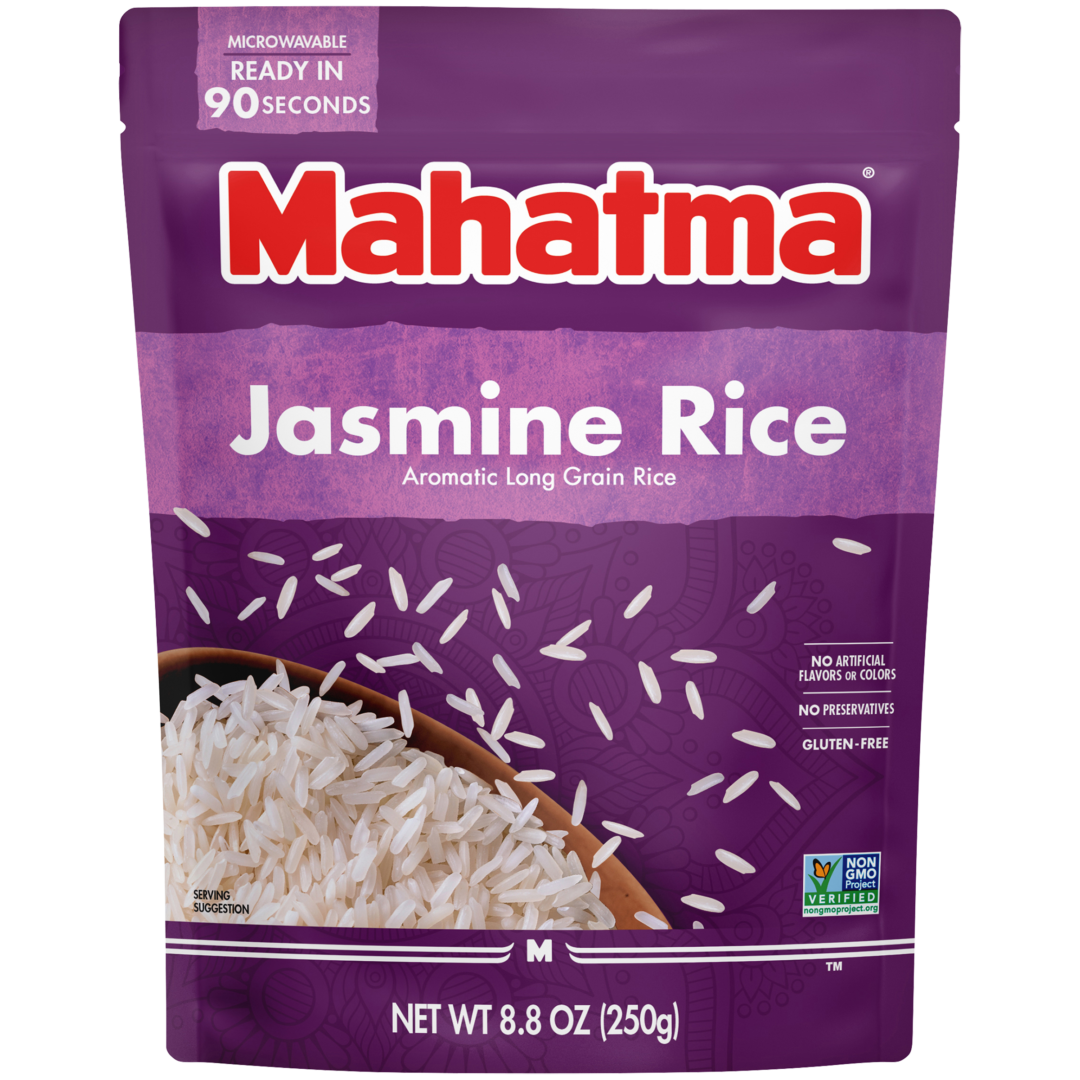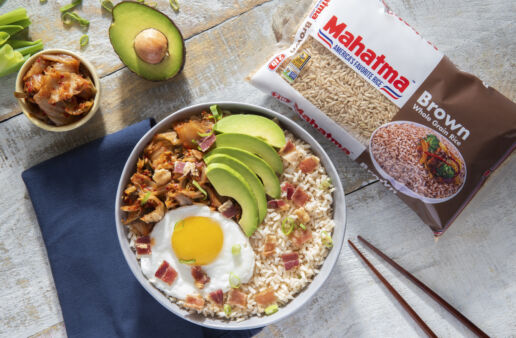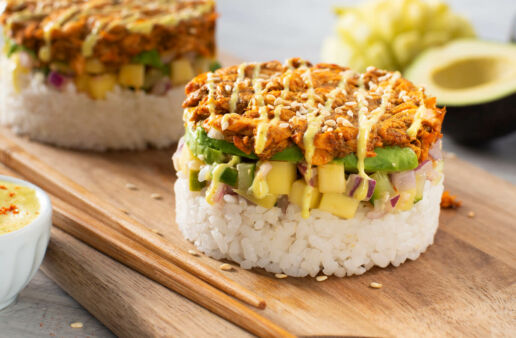
Kimchi Salmon Fried Rice
Instructions
An amazing meal that is ready in minutes, this simple one pan dish is sure to be a family hit.
Step 1
In large skillet set over medium-high heat, add oil. Add rice, the scallion whites and garlic. Cook, stirring frequently, for 3 minutes or until coated.
Step 2
Add egg; cook, stirring frequently, for 2 to 3 minutes or until egg is scrambled and soft curds have started to form.
Step 3
Stir in salmon, kimchi, gochujang and soy sauce. Cook, stirring frequently, for 2 minutes or until heated through.
Step 4
Divide rice and salmon mixture among 2 bowls. Crumble a seaweed sheet over each and garnish with scallion greens. Serve with additional seaweed sheets for scooping if desired.
Recipe Tips
For loaded bowls, top with avocado slices, drizzles of Japanese mayo and toasted sesame seeds.
Substitute leftover salmon fillet with canned salmon or chopped rotisserie chicken for variation.
What Are Scallions?
Scallions are a member of the Allium family, which also includes garlic, onions, leeks, and shallots. Scallion leaves are hollow tubes that are dark green and develop in groups. Although many other varieties of onions are referred to as “scallions,” true scallions are distinguished by their white base and straight, as opposed to rounded, sides, which show the beginnings of a forming bulb. Typically, a few short, off-white root threads protrude from the white end’s bottom.
How to Cook with Scallions
Scallions have the excellent quality of being mild enough to be eaten fresh or cooked for a small amount of time, preserving their crisp texture.
Scallions can be cooked whole or sliced, although they’re probably best eaten raw in salads or as a last-minute sauce garnish. Often used as a garnish in many different recipes, scallions are a common element in Asian and Latin American cuisine.
Cebollitas, or baby white onions with their shoots still attached, are a kind of scallions with larger, more bulbous bottoms that are frequently used in Latin American cuisine. Yet scallions’ more popular variant has straight, cylindrical shoots.
To keep them crisp, cooked onions are frequently added to stir-fries as one of the last components. They are frequently used in salad dressings and marinades. They add more flavor to the dish when finely sliced, however larger pieces will add more taste when consumed.
What Do They Taste Like?
Since they only have two parts—the white bottoms and the green shoots on top—scallions are a highly versatile vegetable with two unique flavors. The flavor of the bottom white portion most closely resembles an onion, especially a white onion, despite being less hot and more sweet. The most pungent part of the onion is frequently mild enough for most palates, even when served fresh as a salad ingredient or garnish. The green part tastes fresh and grassy with a distinct onion flavor.
Where to Buy Them
Although they are always accessible at supermarkets and farmers’ markets, scallions are at their best in the spring and summer (which is why they are also referred to as spring onions). They come in sizes ranging from small to large, with the medium ones having the best flavor. Look for onions with a strong white base and stiff, brilliantly colored green ends. Prevent any bunches with withered or yellowing leaves.
Try some in our Nasi Goreng Recipe.






